Advances in Hematology
Read about what’s new in Hematology clinical journal news via UpToDate.com
(Last updated Jan 4, 2016)
Starting with the concept of blood circulation, which was introduced in 1628, numerous advances have been made in the field of hematology that have significantly improved the lives of patients with hematologic disorders and blazed a trail for advances in other fields. In the last 50 years alone, substantial strides have been made in the research, treatment, and prevention of blood diseases. Listed here are just a few, but those not mentioned are no less important. As past experience has shown us, even some of the most basic research taking place today has the potential to lead to promising life-saving treatments in the future.
A selection of major advances follows. To learn more about some of the top breakthroughs made in the field, please read “50 Years in Hematology: Research That Revolutionized Patient Care.”
Major Advances in Leukemia
Cure of Childhood Acute Lymphoblastic Leukemia (ALL)
ALL was fatal for every child who was diagnosed in the 1960s, but today, after new combinations of drugs were developed and aggressive treatment of the brain and spinal fluid were incorporated, approximately 80 percent of children with the disease are cured. Learn more
Targeted Therapy (“smart” drugs) for Chronic Myelogenous Leukemia (CML)
In the 1950s the only treatment for CML was radiation of the spleen, granting patients about 30 months of survival. The identification of the mutation in the BCR-ABL caused by a specific chromosomal translocation (when a piece of one chromosome breaks off and attaches to another) led to the development of imatinib, a gene-targeting drug that is the paradigm of a new generation of “smart” drugs. Imatinib is the first drug that has been designed to be so specific that it targets and corrects only the molecular defect that leads to CML (unlike chemotherapy, which targets all rapidly dividing cells, both diseased and normal), sparing patients most of the toxic side-effects that usually come with chemotherapy. Treated with this non-toxic oral drug, more than 75 percent of patients diagnosed with CML now achieve a durable complete cytogenetic remission. This development introduced a new way to think about treating cancer patients. With the disease in long-term remission (inactive, but not necessarily cured) many CML patients can now expect a normal life span. Learn more
Targeted Therapy for Acute Promyelocytic Leukemia (APL)
APL was once described as the most malignant (rapidly worsening) form of acute leukemia. Leukemia cells contain molecules that disrupt normal function of the hemostatic system (which controls the flow of blood) and, as a result of initial treatments that triggered the release of these molecules, many APL patients bled to death before the chemotherapy they were given had a chance to work. A simple and effective therapy for this process was established in the 1980s that allowed chemotherapy drugs to kill the leukemia cells without initiating the deadly reaction. In combination with chemotherapy, targeted treatment has significantly improved survival in patients with APL and raised remission rates to about 85 percent. Today, the treatment of APL has become a model for treating cancer with targeted therapy.
• Two major advances were required to develop an effective treatment for APL: the understanding of how and what causes the blood to clot (hemostasis) and the development of targeted therapy (as described for CML above).
Improved Survival in Acute Myeloid Leukemia (AML)
More than 13,000 new cases of AML will be diagnosed in the United States this year. Without treatment, AML can progress quickly and become fatal in just a few months. However, over the past 30 years, new targeted therapies and aggressive chemotherapy have dramatically increased the rate of patients who stay in remission for years or are cured. Today, the initial remission rate is approximately 80 percent.
Major Advances in Lymphoma and Lymphoid Malignancies
Cure of Hodgkin Lymphoma
Today, many patients survive Hodgkin lymphoma. Advancements in radiation therapy and chemotherapy have helped transform this once fatal disorder into a routinely cured disease. More than 80 percent of patients are cured after primary treatment, and the success of treating Hodgkin lymphoma has created hope for curing other forms of cancer. Learn more
Immunotherapy for Non-Hodgkin Lymphoma
The incidence of non-Hodgkin lymphoma has been increasing since the 1970s, making it the fifth most common cancer in the United States. Recent years have seen the development of promising immunotherapy treatments (which stimulate the body’s immune system to fight disease) for patients, increasing survival rates. Studies have shown that five-year survival without recurrence of the lymphoma signals a high likelihood of cure. During the 1960s only 31 percent of patients reached that benchmark. Today, that number has more than doubled to 64 percent.
Improved Therapy and Survival in Multiple Myeloma
There will be more than 19,000 new cases of multiple myeloma this year, and approximately 34 percent of patients survive five years after diagnosis. Unfortunately, there is not yet a cure; however, thanks to advancements in stem cell transplantation and treatment therapies, patients are living longer, healthier lives than they were 30 years ago.
Major Advances in Bleeding and Clotting
Development of Effective Treatments for Blood Clots
Diseases such as heart attacks and strokes arise from clots that form in our blood vessels. These disorders are some of the most common causes of death in developed countries. However, developments in antithrombotic therapy (which prevents or treats clots) have had a huge impact on health. New antithrombotic treatments have lowered the risk of blood clots in leg veins by more than 70 percent, and deaths from heart attacks have been reduced by around 50 percent. Learn more
Development of Clotting Factor Concentrates for Hemophilia Therapy
For much of the 1960s, the only treatment for hemophilia was to give the patient large volumes of frozen plasma in order to stop bleeding episodes. Generally, children would have to spend three days in the hospital with this type of treatment, and many were reluctant to tell their parents about their injuries, further delaying treatment and gradually leading to chronic joint disease with crippling deformities. Today, clotting factor concentrates are portable and easily stored. Best of all, clotting factor concentrates can be used to treat bleeding episodes without a visit to the hospital. Learn more
Improved Transfusion Therapy Through Screening for Infectious Agents
In the 1980s patients with hemophilia lived in fear of contracting viruses such as HIV and hepatitis B through the regular blood transfusions they needed to manage the disease. Now, thanks to new recombinant DNA-derived technologies, safe and effective factor concentrates are available, allowing those with hemophilia to treat the bleeding disorder without the constant fear of viral infection. In addition, the development of highly sensitive techniques to screen for viruses has yielded exceptionally safe blood products so that those receiving transfusions can do so with unprecedented confidence. The hematology community continues to improve outcomes and manage risks related to transfusion. Learn more
Major Advances in Genetic Diseases
Effective Prenatal Diagnosis of Abnormal Hemoglobins
Sickle cell disease and thalassemia are among the most common genetic diseases in the United States. Before 1983, there was no national neonatal screening program to detect either disorder. Today, newborns with these diseases greatly benefit from early detection. Those diagnosed with sickle cell disease have a greater rate of survival than children diagnosed later in life.
Development of Diagnostic Techniques to Prevent Stroke in Sickle Cell Disease
Despite progress in understanding the causes of sickle cell disease, the health of patients with this disease was largely ignored until the 1970s. During the 1980s and 1990s, several studies worked to improve the quality of life for these patients. In 1998, transcranial screening allowed doctors to identify sickle cell patients at risk for stroke and treat them with blood transfusions to prevent stroke.
Major Advances in Stem Cell Research
Development of Successful Hematopoietic Stem Cell Transplantation
Today, hematopoietic stem cell transplantation (HSCT) is an important approach for treating blood and bone marrow disorders, as well as certain types of cancer. The earliest work with HSCT began in the 1950s. By the 1960s this treatment was successfully used in patients with end-stage leukemia. Subsequent research in this area has led to improved transplantation techniques and improved survival rates for a number of diseases. Learn more
Major Advances in Anemia
Cloning of Erythropoietin and Development of Recombinant Epo Clinical Use
More than 50 years ago, patients suffering from anemia due to chemotherapy, chronic kidney disease, AIDS, or other disorders were dependent on frequent blood transfusions in order to replenish their red blood cells. In between transfusions, when their red blood cell counts dropped, they would suffer from weakness, fatigue, and shortness of breath. In the 1950s and 1960s scientists conclusively showed that a hormone in the body, erythropoietin, was responsible for regulating red cell production. Twenty years later, researchers developed a nearly identical, synthetic version of that hormone, known as epoetin alfa (Epo), that could be mass-produced and administered by injection under the skin. Today, millions of patients worldwide have benefited from Epo, one of the most widely used drugs created through recombinant DNA technology. Epo has allowed them to live active lives without the inconvenience and risk of repeated transfusions. Learn more
Immunotherapy for Aplastic Anemia
Aplastic anemia is a rare and serious condition that can be traced back to 1888. In the past, severe aplastic anemia was fatal to nearly half of all patients regardless of treatment, but with the development of immunosuppressive therapy combined with other treatments, survival rates have substantially improved, and more than 60 percent of patients experience successful responses to immunotherapy.
(citing the American Society of Hematology)

